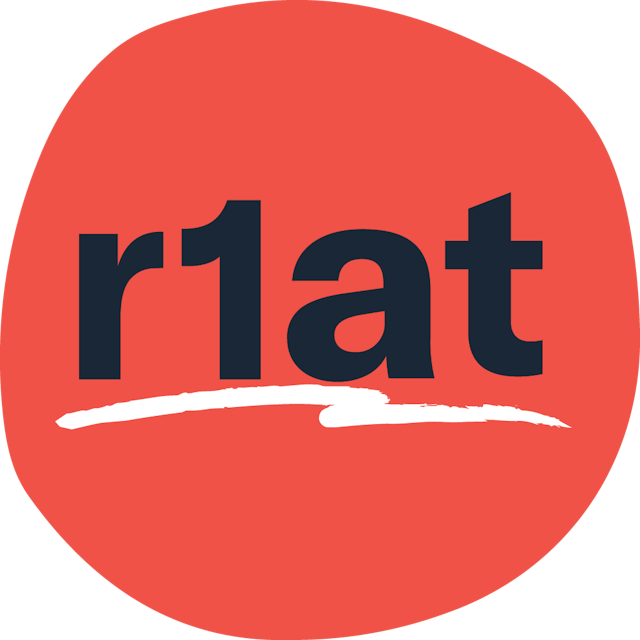GAAD 2025: Build Accessibility Skills Today
Summary: Global Accessibility Awareness Day (GAAD) is a powerful opportunity to learn, reflect, and grow. Every year, the Reason One Accessibility Team (r1at) curates meaningful activities each year that help deepen our understanding of digital inclusion. Now, we’re sharing them with you. Try a few during GAAD week—or anytime—to boost your accessibility awareness and build empathy for all web users.
Why GAAD Matters
Global Accessibility Awareness Day, held annually on the third Thursday in May, is all about elevating the conversation around digital accessibility. It encourages people to explore how users with disabilities experience the web—and how we can do better in designing for them. With over 1 billion people worldwide living with a disability, inclusive design isn’t a niche skill—it’s a necessity.
At Reason One, accessibility is a core value—it shapes how we build, design, and communicate. Every May, our r1at team (pronounced “riot”—because web accessibility is worth fighting for) launches a fresh lineup of activities designed to challenge assumptions and sharpen accessibility skills. The best part? They're hands-on, practical, and fun!
GAAD Activities
Try a Screen Reader
Using a screen reader is a powerful way to learn how people with visual impairments experience digital content. Even a few minutes navigating a familiar site without visuals can reveal usability gaps you might never have noticed otherwise.
If you're new to screen readers, this short 4-minute NVDA tutorial is a great place to start. It introduces basic navigation using NVDA, a free screen reader for Windows. Mac users can explore similar functionality with VoiceOver, built into all Apple devices.
Once you’re familiar, visit your favorite site and navigate it using a screen reader and keyboard. Is all the content accessible with a keyboard? Are headings structured logically? Do buttons and links make sense without visual cues?
If on your phone, take a screen reader selfie and share it with your team. Here are quick-start guides for iPhone VoiceOver and Google Assistant on Android.
You can also deepen your understanding by listening to The Voices of Screen Readers, a podcast exploring how assistive technology impacts daily life. Many of our clients also use Teams, so we recommend trying out basic screen reader tasks in Microsoft Teams for real-world practice.
Use an Accessibility Tool
Automated accessibility checkers can uncover many common issues—like missing alt text, contrast problems, and poor heading structure. Tools like the WAVE browser extension or Lighthouse in Chrome DevTools are a great way to start evaluating your site.
If you’re a designer, compliance manager or product manager, explore Stark. It integrates with tools like Figma and Sketch, making it easy to check contrast ratios and simulate vision types right in your design files.
These tools won’t catch everything, but they’re an essential part of building an accessibility-first workflow.
Learn from the Web Accessibility Community
One of the best ways to grow is by learning from people who live and breathe accessibility. Many advocates share insights, tutorials, and real-world stories that can deepen your understanding.
While platforms like Twitter (now X) were once the go-to, many accessibility professionals have moved to Bluesky. This Bluesky "Accessibility Advocates" starter pack features a curated list of seasoned professionals worth following.
Accessibility standards are also evolving. WCAG 2.2 was recently released and includes updates that better support users with cognitive and low vision disabilities. Not sure what changed? This guide breaks down the differences from WCAG 2.1 in clear, digestible terms.
Want to go deeper? Browse virtual GAAD events happening around the world and join a webinar, panel, or workshop.
Test and Audit Your Site
You don’t need to be a developer to start accessibility testing. Begin by zooming your browser to 200% and check how the layout responds. Are elements overlapping or cut off? Is all content still reachable?
Try navigating your site with only a keyboard. Can you reach every menu, form field, and interactive element? Is the focus indicator visible? These simple tests can uncover major accessibility blockers.
Combine these manual tests with automated tools like WAVE or Lighthouse for a broader view of your site’s accessibility health.
Host an Internal Accessibility Challenge
Every year, our team plays Accessibility Bingo. Team members complete different challenges—like testing with a screen reader, checking contrast ratios, or creating an accessible PDF document. We check off squares, share what we learned, and celebrate the experience together.
Want to try it? Create a bingo card with accessibility tasks tailored to your team. Give everyone the week to complete it and wrap up with a group reflection session. It’s low-stakes, collaborative, and highly effective.
Accessibility is a Year-Round Commitment
Global Accessibility Awareness Day may come once a year, but accessibility is always in season. These activities are just a starting point—designed to spark curiosity, grow skills, and build a culture of inclusion.
Whether you're a developer, designer, strategist, or stakeholder, your role in accessibility matters. And together, we can create a web that works for everyone.
Want more ideas? Follow the work our r1at team does year-round and subscribe to our newsletter to stay updated.
